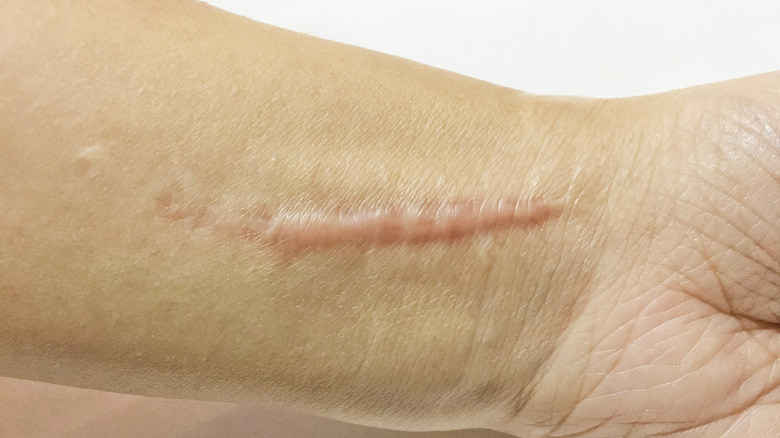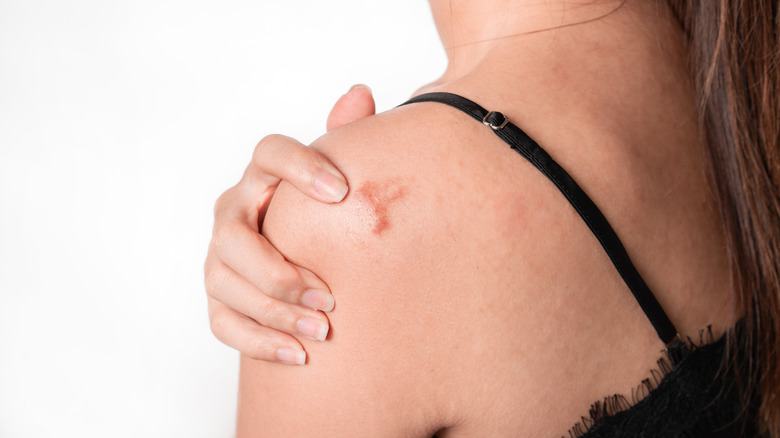How To Tell If You Have A Hypertrophic Or A Keloid Scar
In the unfortunate event that an injury leaves you with a scar, your body's process of healing can sometimes go into overdrive. In this case, you could end up with a more prominent scar. These sorts of reactions are common on areas of the skin that are especially taut, or following a significant burn injury or a surgical incision (via Cleveland Clinic).
Known as hypertrophic and keloid scars, these reactions come as a result of extra connective tissue forming and more collagen being pumped into the area while the body heals. According to New York dermatologist Ellen Marmaur, MD, this comes as a result of the body misunderstanding the "signals of an injury" so it "continues to create more scar tissue than is needed" (via Refinery29).
Those with piercings, especially on the ears, will be very familiar with keloid scars which can develop into pretty nasty growths over time. However, sometimes they can be mistaken for hypertrophic scars, which can require less treatment to get rid of. So, what's the main difference between the two?
Hypertrophic scars are raised areas of the skin while keloid scars are lumps
While both are caused in a relatively similar way, they do differ in appearance and size. A hypertrophic scar presents as a thick raised area around the scar, and stays within the area of the wound (via Cleveland Clinic). They're usually pink to red in color and develop one or two months after an injury has occurred. These types of scars become less visible over time, but can require treatment to lessen the visibility if they're on the larger size.
Hypertrophic scars that happen as a result of a piercing can appear with a few weeks or even a year after the piercing has taken place, according to New York dermatologist Ellen Marmaur, MD (via Refinery29).
Keloid scars, on the other hand, are extra tissue that grows into a "smooth, hard growth," according to Healthline. This type of excess scar tissue can be much larger than the wound itself, and spread pretty widely around it. You'll probably be most familiar with keloids in ear piercings that the body has rejected, as they can form large lumps on the earlobes. If left untreated, it can continue to grow larger with scar tissue over time and be quite painful.

